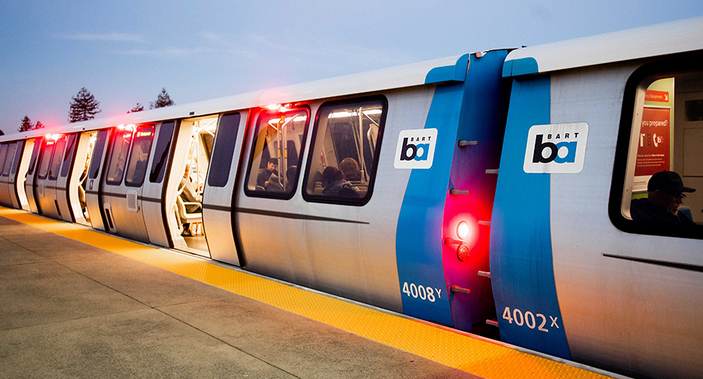Despite the much ballyhooed talk by San Francisco Mayor Gavin Newsom that his city will implement a public bike share pilot (two years of talk that has garnered numerous press hits), the first bike share program in the Bay Area will likely be implemented by the middle of 2010 in Santa Clara County by the Valley Transportation Authority (VTA). While small size may still be a liability to its success and long term funding sources must be determined, the VTA is miles ahead of other transit operators in completing the process necessary to deliver a pilot.
 Photo: barolodrinker
Photo: barolodrinkerThe VTA has wrapped up its market research data collection, is completing its business model, and will release its final analysis report by the end of this year for a pilot project intended to link three Caltrain stations in Mountain View, Palo Alto, and San Jose with multiple satellite destination points, such as Stanford and San Jose State Universities and job centers like Moffett Park and San Jose City Hall.
The VTA used an initial $75,000 from their general budget to hire Economic and Planning Systems (EPS) to conduct the planning work, but applied for a $500,000 Safe Routes to Transit grant to implement the pilot, money that will come from bridge tolls collected by the Metropolitan Transportation Commission (MTC). VTA has learned that the project has been ranked for funding, though it might not get the money for a month or two.
"Bikes in general are given short shrift in suburban sprawling areas," said Chris Augenstein, Deputy Director of Planning at VTA. "We can do a lot more to make bicycles a real mode and integrate them into everything we do."
While the VTA insists it is too early to start speculating about how many bikes would be involved in the program, they've conducted over 1200 surveys at target areas, with particular focus on Caltrain riders and corporate partners who sit on their Bike Share working group, including Yahoo! and Adobe. When pressed on a number of bikes, Augenstein said that Paris' Velib bicycles cost over $3,000 each and suggested I could do the math to figure out how many bikes the MTC grant would buy (over 150, though other start-up costs must be factored in). He also said the VTA was studying advertising models with companies like Clear Channel (which runs Barcelona's Bicing bike-share program) or JC Decaux (which runs Velib) to offset operating and expansion costs.
Peter Skinner, Director of Transportation and Land Use at the Silicon Valley Leadership Group, which has worked with VTA on the development of the project scope, said he hoped the bike-share program would be seen as an extension of transit for the last mile of a Caltrain trip. "We're very supportive of the program, especially with Caltrain having limited storage for bicycles. It provides an alternative for bringing your own bicycle on board."
He was, however, concerned with the long-term funding picture after the grant for the pilot has been used, particularly given the economic climate. "To me, it's where will the program go beyond the pilot?" said Skinner. "How do you sustain the program in the long term? I think it's something that needs to be determined."
While Corinne Winter at the Silicon Valley Bicycle Coalition touted the project's benefits, Andy Thornley at the San Francisco Bicycle Coalition was more skeptical. "Unlike Paris or Copenhagen or Montreal, most Peninsula workplace destinations are sprawled out at some distance from rail stations, as are workers' residences, so bike-sharing pods would likewise need to be sprawled out, negating much of the advantage of a sharing system."
He added: "As a short-haul, urban-trip, frequent-turnover element of VTA's overall system, bike sharing may make sense, and we're eager to see what VTA learns from this trial, but we're dubious of its utility as a first- and last-mile element for daily Caltrain commutes."
VTA's Augenstein countered any doubts about the agency's approach to the project, arguing that by doing extensive market research and intercept studies, they will be targeting the project to expressed need. "We don't have all the answers, but we want to put our feet out there in the deep end," he said. "By focusing on the Caltrain stations where you have bike capacity problems, we think we're taking a logical step. Nobody really knows how [bike sharing] is going to fare in the Bay Area, but that's the whole purpose for the pilot."





